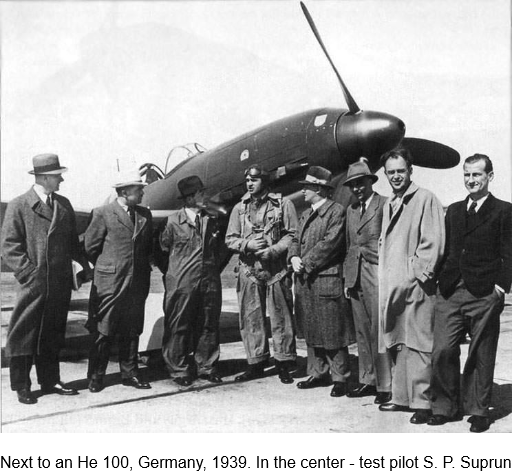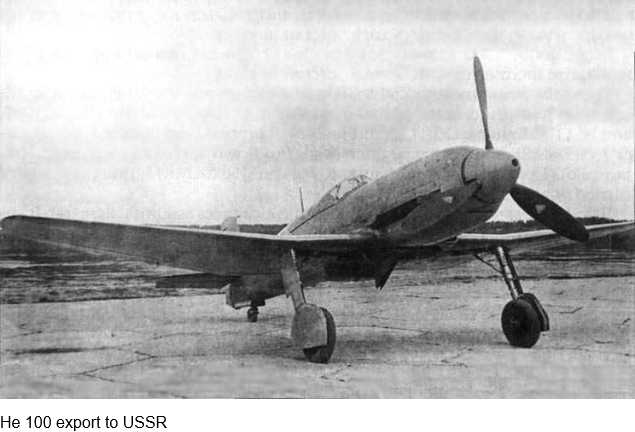| Type |
Werk.Nr |
Registration |
History |
| V1 |
1901 |
D-ISVR |
First flight 22 January 1938. Sold to USSR |
| V2 |
1902 |
D-IOUS |
First flight 17 May 1938. Sold to USSR |
| V3 |
1904 |
D-ISVR, D-IDGH |
Smaller wing. Crashed in August 1938 |
| V4 |
1903 |
D-ILKU, D-IRCN ?? |
Sold to USSR |
| V5 = A-01 |
3001 |
D-IRSO |
First flight 16 November 1938. Sold to USSR |
| V6 = A-02 |
3002 |
D-IACI |
Sold to USSR |
| V7 = A-03 |
3003 |
|
Sold to USSR |
| V8 |
1905 |
D-IDGH |
|
| V9 |
3004 |
D-IWOP |
|
| V10 |
3005 |
D-ITRL |
|
| A-0 |
3006 |
D-ITLR |
|
| A-0 |
3007 |
D-ITLR |
|
| A-0 |
3008 |
|
|
| A-0 |
3009 |
|
|
| A-0 |
3010 |
|
|
| A-0 |
3011 |
|
|
| A-0 |
3012 |
|
|
| A-0 |
3013 |
|
|
| A-0 |
3014 |
|
|
| A-0 |
3015 |
|
|
| A-0 |
3016 |
|
|
| A-0 |
3017 |
|
|
| A-0 |
3018 |
|
|
| A-0 |
3019 |
|
|
| A-0 |
|
|
|
| A-0 |
|
|
|
Known Registrations : D-IADV
When the war opened in 1939 Heinkel was allowed to look for foreign licensees for the design. Japanese and Soviet delegations visited the Marienehe factory on 30 October 1939 and were both impressed by the design.[5] The Soviets were particularly interested in the surface cooling system, having built the experimental Ilyushin I-21 with evaporative cooling and to gain experience with it they purchased the six surviving prototypes (V1, V2, V4, V5, V6 and V7). After arriving in the USSR they were passed onto the TsAGI institute for study.
The Japanese were also looking for new designs, notably those using inline engines, where they had little experience and purchased the three D-0s for 1.2 million RM, as well as a license for production and a set of jigs for another 1.6 million RM. The three D-0s arrived in Japan in May 1940 and were re-assembled at Kasumigaura. They were then delivered to the Japanese Naval Air Force where they were renamed AXHe1, for "Experimental Heinkel Fighter".[5] When referring to the German design, the aircraft is called both the He 100 and He 113, with at least one set of plans bearing the latter name.
The prototypes were accompanied by Heinkel test pilot Gerhard Nitschke, who worked with Lieutenant Mitsugi Kofukuda during the testing and evaluation. The Navy was so impressed by tests that they planned to put the aircraft into production as soon as possible, as their land-based interceptor. (Unlike every other armed forces organization in the world, the Japanese Army and Navy both fielded complete land-based air forces.) Hitachi won the contract for the aircraft and started construction of a factory in Chiba for its production. With the European war on, the jigs and plans never arrived.

















